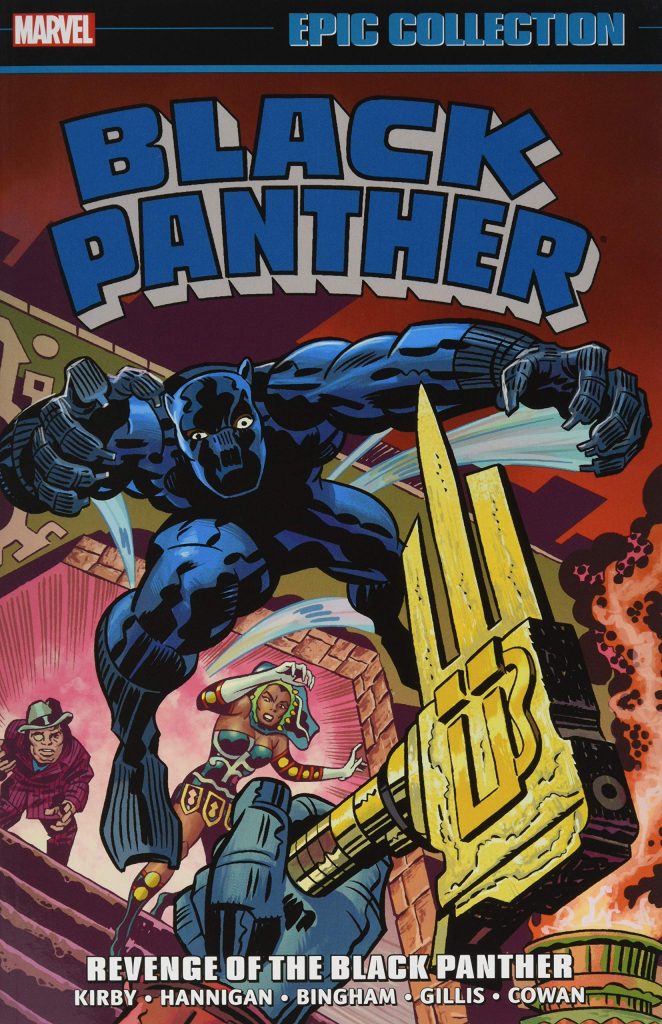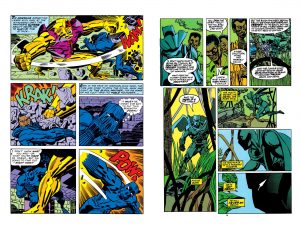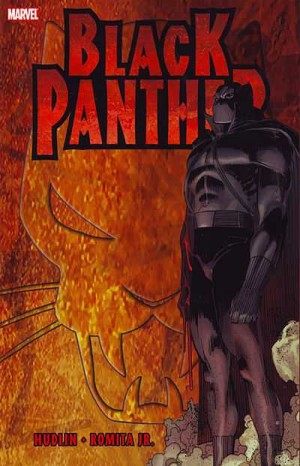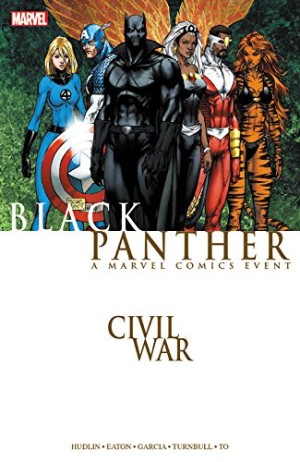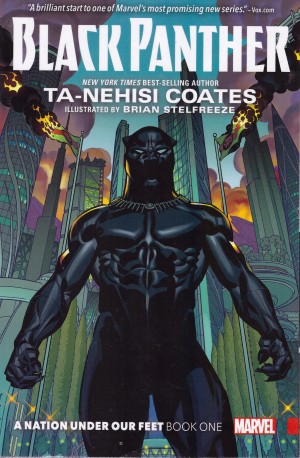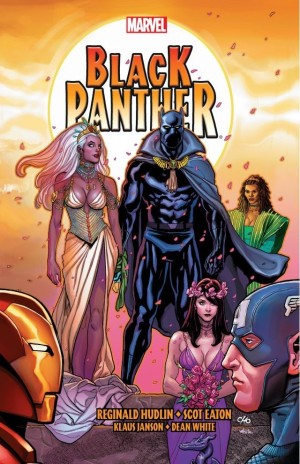Review by Frank Plowright
While Marvel’s Epic Collections have the commendable ethos of presenting every story featuring a character in chronological order, where publication hasn’t been continuous the result can be incredibly mixed graphic novels. There can’t be one more fitting that description than Revenge of the Black Panther. It veers from lighthearted adventure to heavy-handed political condemnation, rarely dipping into conventional superheroics.
Over half the collection is the work of Jack Kirby, previously reprinted over two paperbacks titled Black Panther by Jack Kirby. Kirby co-created the Panther to make a political statement, but wasn’t interested in following the direction established by Don McGregor in Panther’s Rage. In 1977 it was an abrupt switch from African politics and American bigotry to Kirby’s vision of a treasure hunting predecessor to Indiana Jones, unconcerned with skin colour or social problems. Kirby’s creative impulses head into overdrive, setting a frenetic pace as the Panther is pitted against artefact collectors and incredible menaces. To begin with at least, it’s monumentally imaginative with dynamic art. At the time, however, it wasn’t well received, and criticism and subsequent editorial interference saw Kirby lose interest. The shark is jumped around the eighth chapter and while the art can still impress, no amount of revisionist understanding can rescue the later stories.
Marvel cut McGregor off at the knees midway through his setting the Panther against the Ku Klux Klan (see Panther’s Rage), but four years later decided the story was worth completing after all. Ed Hannigan and Jerry Bingham were handed the poison chalice of producing a story continuing from the point where confrontation between the Panther and the Ku Klux Klan was inevitable. While Hannigan’s plot extrapolates from what came before, it’s unsatisfactory and sanitised, the focus being on squabbles between two hate groups. Bingham, though, is an elegant and under-rated artist and it’s nice to see his work presented on decent paper stock.
Ten pages by co-plotted by Chris Claremont and John Byrne introduce the idea that Storm knew T’Challa back in the day, an idea eagerly seized on by 21st century creators, but it’s just filler. It’s also the last solo Black Panther, or near solo, for eight years until 1988.
That story hasn’t seen print since the original comics, and again places the Panther within the context of African political problems, Marvel too fearful to name and shame South Africa, instead setting institutionalised racism and police torture in the fictional country of Azania. Beyond that timidity, though, Peter B. Gillis lets loose some righteous indignation about the country’s policies, and a rebellion is fermenting behind savage revenge killings by what’s identified as a humanoid panther. At the same time the Panther’s status as the rightful ruler of Wakanda is being undermined, the panther spirit believed among his people to have deserted him. The problems are introduced well enough, and there’s some nice art from Denys Cowan (sample right), but any impression that this is a piece with something to say disappears with the introduction of Azania’s officially sanctioned superheroes in the second chapter. The atrocities are overbaked, and the plot becomes repetitive and contrived. That’s a shame, as with a little more thought (and fewer Azanian superheroes) there was the basis of something worthwhile, and Cowan, influenced by Gil Kane, produces interesting pages throughout.
Chronologically the next Panther stories were McGregor’s return, which last saw print as Panther’s Prey.
